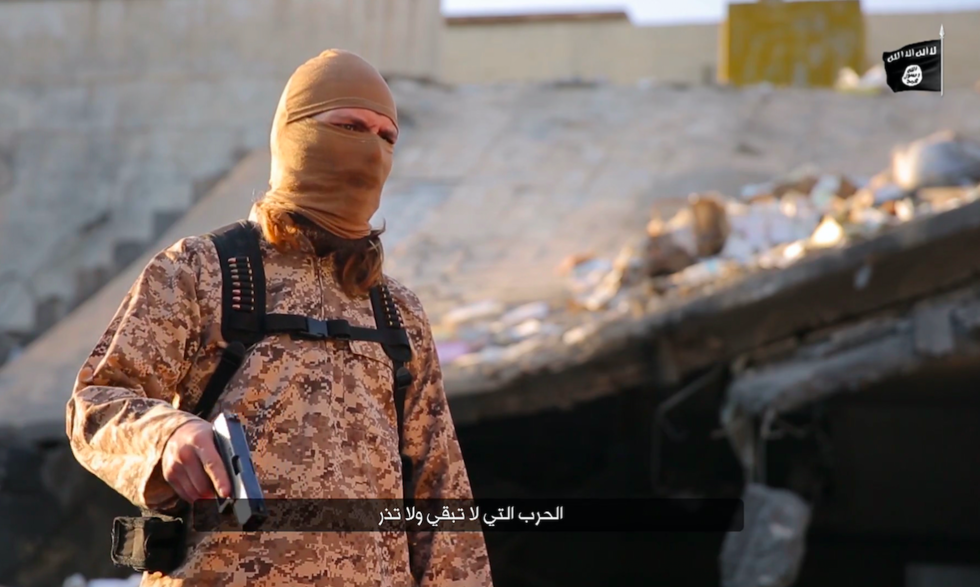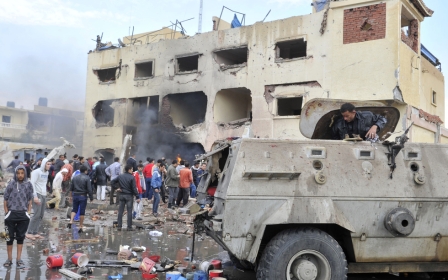Defeating Islamic State requires unified global effort

On 24 January, the Islamic State (IS) group uploaded a 17-minute video to its Telegram account featuring nine perpetrators of the terrorist attacks that killed 130 people in Paris on 13 November last year. The footage suggests that the attacks were not planned by an independent jihadist cell but commanded by IS’s central leadership in Syria and Iraq.
This theory is in line with the conclusions of Europol's latest assessment on the modus operandi of Europe-based operatives linked to IS.
In its report, entitled “Changes in Modus Operandi of Islamic State Terrorist Attacks,” the law enforcement agency of the European Union states that the Paris attacks, as well as IS’s foiled attacks on EU soil, indicate a shift in IS’s strategy towards a broader, more global, plan of action.
US officials have also warned of the potential threat posed by IS’s evolving strategy.
During their annual threat assessment to the Senate Armed Services Committee, Director of National Intelligence James Clapper and Defence Intelligence Agency Director Vincent Stewart pointed to recent terrorist attacks perpetrated by IS or its affiliates in territories outside of their control as evidence of IS’s operational capabilities abroad. According to Stewart, IS “will probably attempt to conduct additional attacks in Europe, and attempt to direct attacks on the US homeland in 2016”.
So far, however, the West has not been the primary target of IS’s terror campaign. Last year, the organisation expanded the scope of its operations to North Africa and the Gulf, where IS and its affiliates have claimed responsibility for a series of attacks against religious minorities, including the Shia community.
These attacks, which aim at inciting further regional instability and inflaming the Sunni-Shia sectarian divide, fall within IS’s broader strategy and showcase IS’s threat's global character.
Nevertheless, both the West and its partners in the Middle East have mainly confronted the terrorist threat posed by IS from a domestic, rather than global, approach, failing to address IS’s expanding terror as a united front.
The efforts of each bloc
The EU has focused its efforts on limiting IS’s capacity to operate in EU territory, resulting in an increase in spending by the EU and member states on domestic counter-terrorism. Although EU members remain primarily responsible for ensuring their own internal security, the EU supports them in their fight against terrorism through different instruments, including a legal framework to help coordinate cross-border law-enforcement actions.
Amid the security challenge posed by IS following the Paris attacks, EU leaders set a June deadline for establishing an European border force to control the bloc’s external frontiers, and promised enhanced intelligence sharing and cooperation in domestic counter-terrorism.
In order to accomplish this last goal, the European Counter Terrorism Centre (ECTC), which became operational on 1 January 2015, provides analysis for on-going investigations and contributes to a coordinated EU reaction in the event of major terrorist attacks.
For its part, the US has mainly focused its counter-terrorism efforts on neutralising terrorist threats abroad. These efforts have been particularly effective against the so-called al-Qaeda core.
After 9/11, the US built a national security structure to fight the jihadist organisation, adapting US military, intelligence, and law enforcement agencies to the tasks of counterterrorism and counterinsurgency. By focusing on this goal, the US has failed to embrace a broader set of strategies that could have prevented the raise of IS. Yet so far, again, IS has not directly orchestrated any attacks on US soil.
Partners in the Middle East, led by Saudi Arabia, have opted for a counter-terrorism strategy markedly different from that of its Western allies.
On 14 December 2015, Saudi Arabia announced the creation of a 34-state Islamic coalition to fight terrorism. While the apparent objective of this coalition is to counter terrorism in Muslim countries, Saudi Arabia’s determination to forge a regional alliance against terrorism is reflective of its desire to maintain its regional hegemony.
The conflicts in Iraq and Syria, as well as the adoption of the Joint Comprehensive Plan of Action on the Iranian nuclear programme, have undermined Saudi influence in the Middle East.
In response to this situation, the new Saudi Cabinet, headed by King Salman, is assuming a more assertive role within the region.
The new government is determined to position the House of Saud as the guarantor of regional stability by actively participating in proxy wars.
First, in Syria, where the Islamic Republic of Iran is providing support to the regime of President Bashar al-Assad, Saudi Arabia and other Sunni regimes are funding the Syrian opposition and other moderate forces. Second, in Iraq, Saudi Arabia has significantly contributed to relief operations, easing the living conditions of Iraqi refugees.
Finally, in Yemen, the Saudi Arabia-led coalition backing President Abd Rabbuh Mansour Hadi is fighting the Iranian-backed Houthi movement.
Furthermore, Saudi Arabia is resolved to counter any ideology in the region that is against its interests, particularly at home.
The beginning of 2016 was marked by the execution of prominent Shia cleric Sheikh Nimr al-Nimr, who was a vocal supporter of the anti-government protests that erupted in the Eastern Province in 2011, and 46 other prisoners, most of them belonging to al-Qaeda, who had been sentenced to death after being convicted of terrorism offences.
Saudi Arabia’s counter-terrorism initiatives, as well of those of its Middle Eastern partners and the West, are a step behind IS’s evolving strategy. IS’s terrorist threat is now cross-regional, and, consequently, global security is highly dependent on inter-regional cooperation.
A common counter-terrorism approach
In a recent statement, EU High Representative Federica Mogherini argued that unity is the key to defeat IS: “There is a global threat we need to tackle as a global coalition, with some territorial focus on Syria, Iraq, Libya and Afghanistan. It is a battle for hearts and minds. To win it, we need to unite, and avoid exacerbating the sectarian divide [between Sunnis and Shias].”
Yet little has been done to achieve this unity in the counter-terrorism front. It is time to evaluate the prevailing weaknesses that characterise current counter-terrorism cooperation and address IS’s terror campaign as a threat that requires the urgent adoption of a common counter-terrorism strategy.
Inter-regional cooperation has been achieved on the military front against IS. With more than 9,000 airstrikes to date, the US-led alliance is checking IS’s territorial advances in Iraq and Syria. In addition, the coalition is working with the Iraqi military to retake IS’s territory inside Iraq, and providing military assistance to anti-IS local forces in Syria.
Furthermore, some EU member states have intensified their participation in the US-led military campaign against IS. In the aftermath of the Paris attacks, French President Francois Hollande invoked the until-then-untested collective defence clause of the EU’s charter in an attempt to strengthen Europe’s contribution to the existing military coalition.
Unlike the collective defence clause of the North Atlantic Treaty Organisation (NATO), which holds that an attack on one NATO ally is an attack on all members and requires concrete military action by allies, the EU measure taps into no common defence infrastructure.
Nevertheless, it triggered significant commitments from EU members, particularly from the United Kingdom. The House of Commons authorised – by a large margin of 397 votes to 223 – to expand the UK’s anti-IS bombing campaign in Iraq into Syria, positioning the UK as a strong security contributor in the EU and within the transatlantic alliance.
Unfortunately, military unity is not enough. Amid IS’s expansion, the countries affected by IS’s terror campaign will have to work to deepen their alliance. The existence of a global threat presents new opportunities for cooperation, and these opportunities should be seized, starting with the design of a common counter-terrorism approach.
-Tania Ildefonso Ocampos is a Spanish political analyst who specialises in EU strategy in the Middle East. She is a former Schuman trainee (Euro-Med and Middle East Unit of the European Parliament's Directorate-General for External Policies), and holds an MA in Middle Eastern History from Tel Aviv University, Israel.
The views expressed in this article belong to the author and do not necessarily reflect the editorial policy of Middle East Eye.
Photo credit: An image grab taken from a video released by the Islamic State (IS) group media office in Iraq's Nineveh province on January 30, 2016, purportedly shows a French-speaking jihadist addressing the camera before executing hostages (AFP)
Middle East Eye propose une couverture et une analyse indépendantes et incomparables du Moyen-Orient, de l’Afrique du Nord et d’autres régions du monde. Pour en savoir plus sur la reprise de ce contenu et les frais qui s’appliquent, veuillez remplir ce formulaire [en anglais]. Pour en savoir plus sur MEE, cliquez ici [en anglais].





